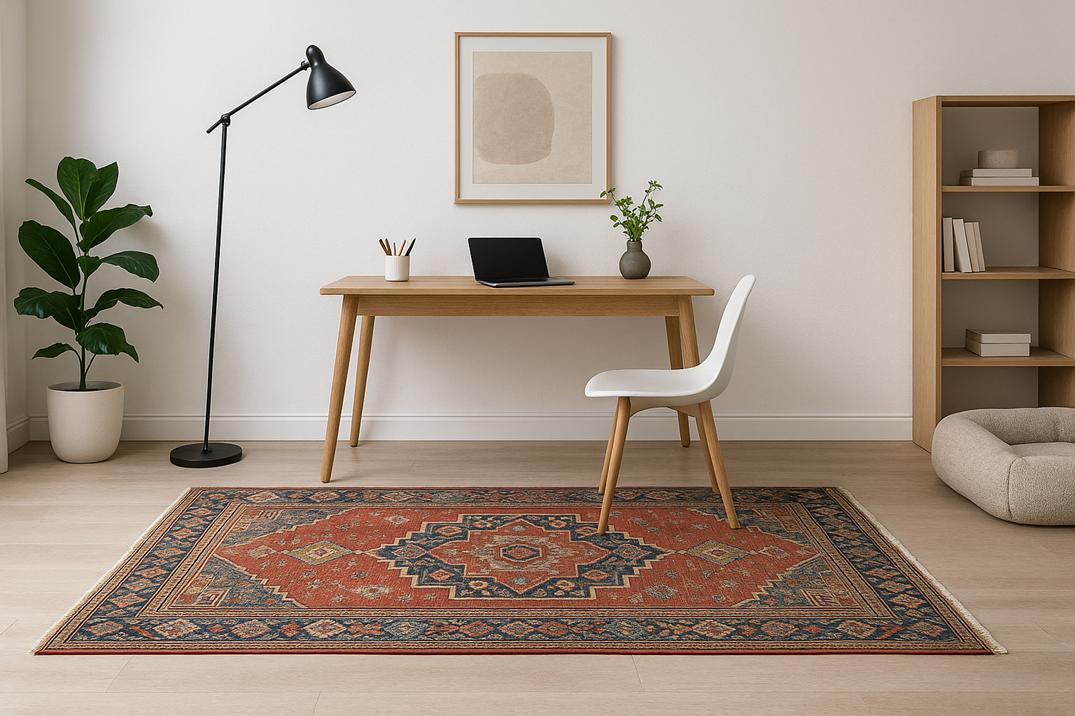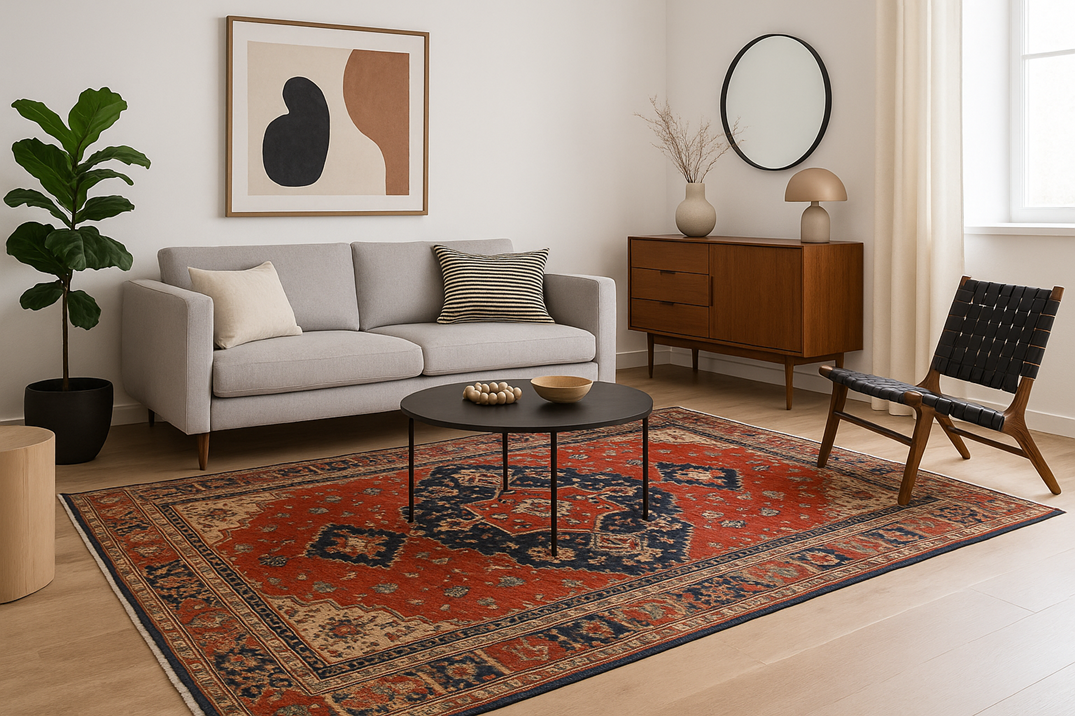Insights
Best Ways to Style Traditional Rugs in Modern Interiors

Ever wondered how to infuse warmth and character into a sleek, minimalist space? The answer might be lying beneath your feet – or rather, it could be a traditional rug. Far from being outdated, these timeless textiles are cultural masterpieces, rich with history, symbolism, and intricate artistry. They offer a compelling contrast to modern interiors, which champion simplicity, clean lines, and functionality.
This isn't just about aesthetics; it's about creating a dynamic dialogue between the old and the new. A traditional rug introduces warmth, texture, and a "lived-in" feel that can soften the often-austere nature of modern design. It's a way to humanize minimalist environments, adding depth and a unique story that mass-produced items simply can't. Plus, hand-crafted traditional rugs are incredibly durable and sustainable, often lasting for centuries – a perfect fit for today's eco-conscious design ethos.

Modern interior design, emerging mid-20th century, is all about "less is more". It prioritizes:
- Simplicity & Functionality: Clean lines, purposeful elements, and often multi-functional furniture.
- Open Spaces & Natural Light: Open floor plans and large windows create airy, inviting, and expansive atmospheres.
- Neutral Color Palettes: Whites, beiges, grays, and blacks form a serene backdrop, allowing accents to pop.
- Textures & Materials: Natural elements like wood, stone, and leather are juxtaposed with industrial glass and metal, adding richness.
- Sustainability: A growing focus on eco-friendly materials and longevity.
This neutral, open backdrop is precisely what makes modern interiors an ideal "blank canvas" for traditional rugs. Their intricate patterns and rich colors can truly shine without overwhelming the space, becoming the focal point and grounding element.
(Note: While "modern," "contemporary," and "Mid-Century Modern" have distinct historical meanings, they share an affinity for clean lines and natural materials, making them all suitable backdrops for traditional rugs .)

The most impactful strategy is to embrace contrast. A vibrant rug against minimalist furniture creates visual tension and prevents a room from feeling stark. This juxtaposition allows both the rug and modern elements to stand out, achieving a sophisticated balance. Consider symmetrical balance for stability or asymmetrical for dynamism.
While modern spaces favor neutrals, traditional rugs often boast rich hues. The trick is to use a light, neutral base for walls and main furniture, then pull accent colors from the rug (like jewel tones) and repeat them in accessories such as pillows or artwork. This ties the space together, making the rug feel intentionally integrated. Be mindful of how lighting affects rug colors; natural light shifts, and artificial light can emphasize different hues.
Size and placement are crucial. The rug should anchor your furniture, not float aimlessly .
- Living Rooms: A large rug should define the seating area, with furniture partially or fully on it.
- Bedrooms: Place the rug two-thirds under the bed for harmony, or use runners on each side .
- Dining Rooms: Extend the rug well beyond the table edges to accommodate chairs .
- Hallways: Patterned runners add instant visual interest.
Don't limit rugs to floors! Historically, textiles were wall hangings or drapes. Layering rugs—a larger neutral base with a smaller patterned rug on top—adds depth and defines zones in open spaces.
Eclectic design thrives on mixing diverse elements . Pairing sleek modern furniture with an antique rug highlights the beauty of both. This fusion creates a unique, personalized aesthetic, where the charm of traditional details enhances modern sleekness, and vice versa. Hand-crafted rugs, with their inherent imperfections, offer a powerful counterpoint to industrial design, celebrating human artistry.
Styling traditional rugs in modern interiors is a sophisticated art that enriches spaces with history, culture, and unparalleled character. By embracing the contrast, harmonizing colors, and strategically placing these woven treasures, you can transform a minimalist environment into a deeply personal, inviting, and timeless sanctuary. It's a celebration of enduring craftsmanship and a testament to how the beauty of the past can perfectly complement the elegance of the present.
